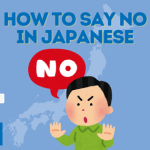From Kirei to Uruwashii: How to Say Beautiful in Japanese
Beautiful in Japanese // Top Japanese Words for Expressing Beauty in Modern and Classical Ways

Whether you’re looking at a beautiful person or a beautiful piece of art, it’s nice to spread positivity and say your thoughts out loud!
One of the advantages of studying the Japanese language is that you will be able to deeply appreciate the beauty of Japanese culture and nature.
In this article, we will show you how to say beautiful in Japanese with many examples and audio to help you perfect your pronunciation.
As you learn about the various expressions, hopefully you will also be able to feel the beauty of the Japanese language!
Beautiful in Japanese || Common Expressions in Everyday Conversation
Beautiful in Japanese || Various Expressions of a Higher Grade
Beautiful in Japanese || Expressions in The Japanese Classics
Beautiful in Japanese || FAQs
Beautiful in Japanese || Common Expressions in Everyday Conversation
First, let’s see the expressions used in everyday conversation.
| JAPANESE | ROMAJI | ENGLISH |
| 綺麗 きれい | kirei | Beautiful |
| 美しい うつく | utsukushii | Beautiful |
| 素敵 すてき | suteki | Beautiful |
| 見事 みごと | migoto | Beautiful |

綺麗 きれい – kirei and 美しい うつくしい – utsukushii are the most common translation for “beautiful”, but of course there are many differences in nuances between these 2 words.
The largest difference is that the word 綺麗 きれい kirei can be also used to mean “pure” and “clean”, but 美しい うつくしい utsukushii doesn’t have that meaning and refers to the state of well-arrangement and artistic beauty.
Let’s see the difference with examples.
綺麗な皿
きれいなさらkirei na sara
A clean/beautiful dish
美しい皿
うつくしいさらutsukushii sara
A beautiful dish
綺麗な皿 kireina sara has two meanings:
1. A clean dish
2. A beautiful dish
But when you say 美しい皿 utsukushii sara, it only means “a beautiful dish.”
If you say この皿は綺麗ですか? – kono sara ha kirei desuka, you imply “Have you washed this dish?”
You can say テーブルをきれいにしてください。 Te-buru wo kirei ni shite kudasai to say “Clean the table.”
You can’t say テーブルを美しくしてください。 Te-buru wo utsukushiku shite kudasai. You can say this when you have commissioned an artist to paint a picture, and you are not very pleased with the table he or she has painted, and you want him to repaint it in a more artistic way.
綺麗な景色
きれいなけしきkirei na keshiki
Beautiful scenery
美しい景色
うつくしいけしきutsukushii keshiki
Beautiful scenery
While these 2 expressions mean almost the same (beautiful scenery), 綺麗な景色 kirei na keshiki implies that there are no contaminants or obstacles.
For example, “beautiful sky without a cloud in the sky” would be translated into 綺麗な空 kirei na sora, rather than 美しい空 utsukushii sora.
For example:
A sign beside a faucet at an elementary school:
手を綺麗にしましょう。
てをきれいにしましょう。Te wo kirei ni simashou.
Wash your hands.
A common motto in Japan’s old-fashioned workplace:
A sign at the entrance of the park:
公園を綺麗にしましょう。
こうえんをきれいにしましょう。Kouen wo kirei ni simashou.
Keep the park clean.

デスクを綺麗にしましょう。
デスクをきれいにしましょう。Desuku wo kirei ni simashou.
Keep the desk clean and organized.
As these examples imply, 綺麗にする kirei ni suru can be used to euphemistically say “Clean.” These are expressions often seen in Japanese signs and posters.

Cracks in the Country of Harmony: How to Say No in Japanese
Not as Simple as it Seems: Understanding the Variations of No in Japanese As the phrase “和の精神 ( わ の せいしん wa no seishin) the spirit of harmony” suggests, disagreement and argument are highly frowned upon in Japanese culture. 👉…
The English word “beautiful” is also used to compliment something stunning or wonderful. In those cases, use the following Japanese phrases:
素敵
すてきsuteki
Beautiful
京都の秋の紅葉は本当に素敵でした。
きょうとのあきこうようはほんとうにすてきでした。Kyouto no aki no kouyou wa hontou ni suteki deshita.
Autumn leaves in Kyoto were truly beautiful.
speak 見事
みごとmigoto
Beautiful
あなたの新しい髪型、とても素敵ですよ。
あなたのあたらしいかみがたとてもすてきですよ。Anata no atarashii kamigata, totemo suteki desuyo.
Your new haircut looks great.

彼の英語は見事なものだ。
かれのえいごはみごとなものだ。Kare no eigo wa migotona monoda.
His English is superb.
あなたの笑顔はいつも素敵ですね。
あなたのえがおはいつもすてきですね。Anata no egao wa itsumo suteki desune.
Your is always so beautiful.
お見事!
おみごと!omigoto!
Well done! / Beautiful! / Wonderful!
As you can see, 素敵 すてき suteki means excellent, impressive, and wonderful.
On the other hand, 見事 みごと migoto indicates a high degree or excellence.
素敵ですね すてきですね Suteki desune and 見事ですね みごとですね can be used in business scenes.
Beautiful in Japanese || Various Expressions of a Higher Grade
Below are some more advanced expressions. It is more important to get a sense of the nuance in the example sentences than in the words themselves.
| JAPANESE | ROMAJI | ENGLISH |
| 麗しい うるわ | uruwashii | Beautiful |
| 華麗な かれいな | kareina | Beautiful |
| 優雅な ゆうが | yuugana | Beautiful |
| 上品な じょうひん | jouhinna | Beautiful |
麗しい うるわい uruwashii means noble, elegant, and graceful. Note the use of the same kanji as 綺麗 – きれい.
麗しい友情
うるわしいゆうじょうuruwashii yuujou
beautiful friendship
見目麗しい
みめうるわmimeuruwashuu
beautiful-looking
彼女は所作が麗しい。
かのじょはしょさがうるわしい。kanojo wa shosa ga uruwashii.
She has beautiful manners.
華麗な かれいな kareina means elegant, splendid, gorgeous. It represents a glamorous, conspicuous, and attractive appearance.
彼は華麗なダンスを披露した。
かれはかれいなダンスをひろうした。kare wa karei na dansu wo hirou shita.
He performed a spectacular dance.
フランスの華麗な宮殿をいつか訪れてみたい。
フランスのかれいなきゅうでんいつかおとずれてみたい。Huransu no karei na kyuuden wo itsuka otozurete mitai.
I would like to visit the splendid palaces of France someday.
優雅な ゆうが yuugana means being graceful and elegant, detached from worldly affairs, and being relaxed.
彼女は優雅に暮らしている。
かのじょはゆうがにくらしている。Kanojo wa yuugani kurashiteiru.
She lives a life of grace.
彼女は貴族の優雅な生活にあこがれている。
かのじょはきぞくのゆうがせいかつにあこがれている。Kanojo wa kizoku no yuugana seikatsu ni akogareteiru.
She longs for the elegant life of the aristocracy.
上品な じょうひん – jyouhinna means refined and desirable with a sense of prestige.
This adjective can also be used for taste and letter.

この寿司は上品な味だ。
このすしはじょうひんなあじだ。Kono sushi wa jouhinna aji da.
This sushi tastes elegant.
彼女は上品な字を書く。
かのじょはじょうひんなじをかく。Kanojo wa jouhinna ji wo kaku.
She writes elegant letters.

Talking About Yourself and Others || Pronouns in Japanese
Today we will take a look at all the important personal pronouns in Japanese which include the likes of 私, 僕, 俺, 彼, and 彼女. Let’s learn Japanese together.
Beautiful in Japanese || Expressions in The Japanese Classics
やまとは国のまほろば やまとはくにのまほろば – Yamato wa kuni no mahoroba
たたなづく青垣 たたなづくあおがき – tatanaduku aogaki
山こもれる やまこもれる – yama komoreru
やまとし麗し やまとしうるわ – yamato shi uruwashi
This is a poem mentioned in the Kojiki – 古事記 こじき – Records of Ancient Matters, which is said to have been composed by 倭建命 やまとたけるのみと Yamato Takerunomikoto.
This poem was written by him about the beauty of Yamato (now Nara Prefecture) in Japan.
The poem says:
Yamato is the best place in the country.
Surrounded by mountains and hills like layers of overlapping hedges,
Yamato is truly a beautiful and splendid place.”
Let’s look at the meaning of each word.
| JAPANESE | ROMAJI | ENGLISH |
| やまと | Yamato | Japan, especially Nara area today |
|
国
くに | Kuni | a country |
| まほろば | mahoroba | The best and most beautiful place |
| たたなづく | tatanaduku | overlapping |
|
青垣
あおがき | aogaki | green fences, hedges |
|
山
やま | yama | a mountain |
| こもれる | komoreru | to be surrounded |
| やまとし | Yamato shi | Yamato is |
| うるわし | uruwashi | beautiful |
Only a few Japanese may know the entire poem, but the opening phrase やまとは国のまほろば やまとはくにのまほろば Yamato wa kuni no mahoroba is very famous. This pastoral expression well expresses the gentle spirit of the Japanese people and their delicate love for the richness of nature.
As we have seen above, there is a wide variety of expressions of beautiful in Japanese.
It may be very difficult to distinguish between them, but you will gain a better understanding of them by talking with native Japanese speakers and gaining a lot of practical experience. Especially if you know the ancient verses, the Japanese person you are talking to will teach you even more things.
Still have more questions? Leave them here!
Want to expand your cultural and linguistic knowledge even further? Check out these blogs:
👉 How to Use Adjectives in Japanese
👉 How to Use Adjectives in Vietnamese
👉 How to Use Adjectives in Korean
How is beautiful translated into Japanese?
It is translated into “綺麗な (きれい) kireina” or “美しい (うつく) utsukushii.”
What is the difference between 綺麗な (きれい) Kireina and 美しい (うつく) Utsukushii?
Kireina can refer to cleanliness, while utsukushii only refers to beauty.
What does 上品な (じょうひん) jouhinna mean?
It means “refined and desirable with a sense of prestige.”
What does まほろば mahoroba mean?
It means the best and most beautiful place.
What is Yamato?
It is an archaic word meaning Japan. Depending on the context, it may also mean Nara Prefecture.
Want More From LTL?
WANT TO LEARN JAPANESE? Check out our online Japanese courses here.
We offer a 7-day free trial to all new students where you can study 24/7.
What about studying Japanese in Japan instead? We’ve got your back. Our Japanese courses in Tokyo can either be taken in small groups of no more than 5 students or individually for a more tailored experience.
We even offer incredible homestay experiences in Tokyo as well.
Come and be a part of this amazing community.












